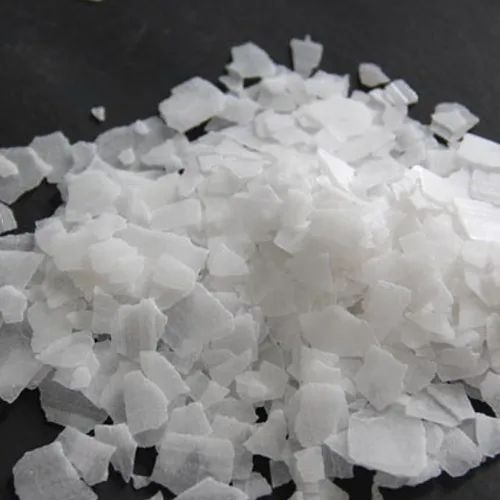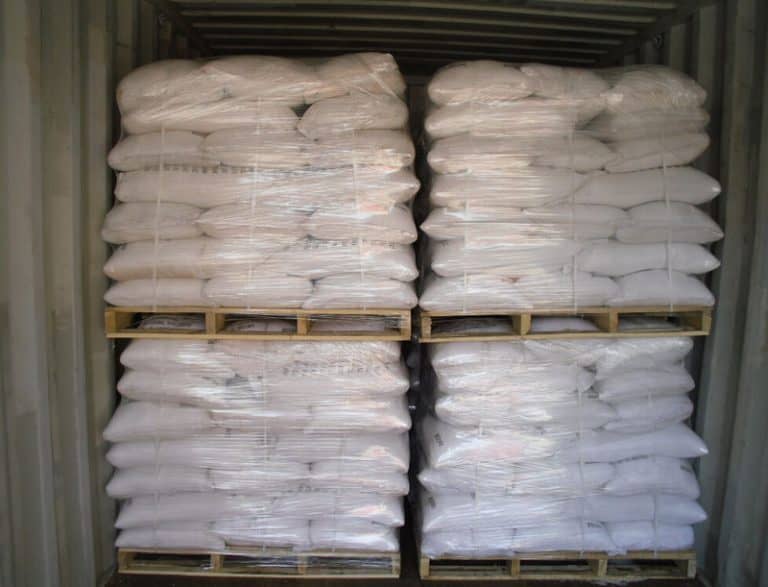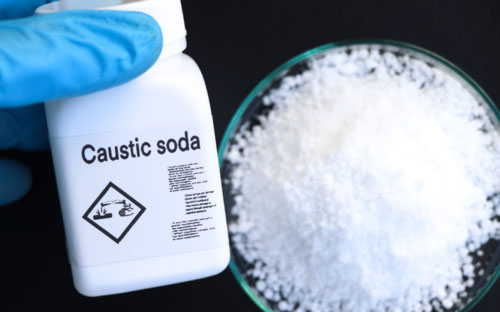Caustic Soda – CAS#: 1310-73-2
Bulk Order
Caustic Soda also known as lye and sodium hydroxide is an inorganic compound with the formula NaOH. It is highly soluble in water, and readily absorbs moisture and carbon dioxide from the air. Caustic Soda is used mainly in cleaning products for both industrial and household uses. Also can be used to adjust pH in various manufacturing processes. Sodium hydroxide is used in many industries: in the manufacture of pulp and paper, textiles, drinking water, soaps and detergents, and as a drain cleaner. Sodium Hydroxide is available in solid form (flakes, prills, briquettes) as well as liquid form in various concentrations.
Bulk order of a clear, colorless, syrupy liquid that is slightly viscous and soluble in water, alcohol, and acetone. It is an organic compound with a slight, sweet odor; and is hygroscopic.
ISO 9001, ISO 14001, ISO 13485, and ISO 45001
| Density | 2.13 g/cm3 (20 °C) |
| Melting Point | 318 °C |
| pH value | >14 (100 g/l, H₂O, 20 °C) |
| Vapor pressure | <24 hPa (20 °C) |
- ISO Containers
- Drums
- Intermediate Bulk Containers (IBCs)
- Jumbo Bag
What is the Caustic Soda?
Caustic soda, also known as sodium hydroxide, is a highly reactive and corrosive inorganic compound with the chemical formula NaOH. It is a white, odorless, crystalline solid that is soluble in water, alcohol, and glycerol. Caustic soda is a strong base that can react violently with acids and other chemicals, and it is highly reactive with organic matter.
Caustic soda is commonly used in a variety of industrial processes, including pulp and paper manufacturing, petroleum refining, and chemical synthesis. It is also used in cleaning and disinfecting agents, as well as in the production of various consumer products, such as soap and detergents.
Some of the major producers of caustic soda include the Middle East countries such as Iran, United Arab Emirates, China, and South America.
Synonyms: Sodium Hydroxide, Lye, Ascarite, White caustic, Sodium hydrate, NaOH, Natronlut
What Caustic Soda Used For?
Caustic soda is a highly reactive and versatile chemical with many uses in various industries. Here are some of the most common uses:
Caustic soda is used in the production of many chemicals, including detergents, soaps, and biodiesel.
Caustic soda is used in the production of paper and pulp, where it is used to break down lignin and other impurities in wood pulp.
Caustic soda is used in the refining of petroleum products, where it is used to remove impurities and sulfur compounds.
Caustic soda is used in food processing to clean equipment and surfaces, as well as to remove unwanted flavors and colors from food products.
Caustic soda is used in many cleaning agents, such as drain cleaners and oven cleaners, due to its ability to dissolve grease and other organic matter.
Caustic soda is used in the production of textiles, where it is used to dissolve unwanted fibers and to mercerize cotton.
Caustic soda is used in water treatment to adjust the pH levels of water and to remove impurities.
Caustic Soda Industry Used
This substance is used in the production of the following materials:
- Pulp & Paper
- Pharma
- Oil & Gas
- Cleaning
- Coatings & Construction
- Polymers
- Mining
- Cosmetics
- Water Treatment
- Food
- Animal Nutrition
- Agrobusiness
- Lubricants
Caustic Soda Safety Procedures
Caustic soda, also known as sodium hydroxide or lye, is a highly corrosive and dangerous chemical that can cause severe burns, eye damage, and other serious injuries if it comes into contact with the skin or eyes. Here are some safety procedures to follow when working with caustic soda:
- Wear personal protective equipment (PPE): When working with caustic soda, it’s important to wear appropriate PPE to protect yourself from exposure. This may include safety glasses, gloves, face shields, and chemical-resistant clothing.
- Handle with care: Caustic soda should be handled with extreme care to avoid spills or splashes. Always use proper lifting techniques and avoid dropping or jostling containers of caustic soda.
- Store properly: Caustic soda should be stored in a secure, designated area away from other chemicals or materials that could react with it. It should be stored in a cool, dry, well-ventilated area and kept away from sources of heat or ignition.
- Use only in well-ventilated areas: Caustic soda should only be used in areas with adequate ventilation to prevent the buildup of toxic fumes or vapors.
- Use appropriate handling equipment: When transferring or dispensing caustic soda, use appropriate handling equipment such as pumps or funnels to avoid spills or splashes.
- Know how to neutralize spills: In the event of a spill, it’s important to know how to properly neutralize and clean up the soda. This may involve using a neutralizing agent or contacting emergency services for assistance.
- Train employees: All employees who work with or around caustic soda should receive thorough training on proper handling and safety procedures. This should include information on the hazards of the chemical, proper PPE, and emergency response procedures.
- By following these safety procedures, you can help prevent accidents and injuries when working with caustic soda.


